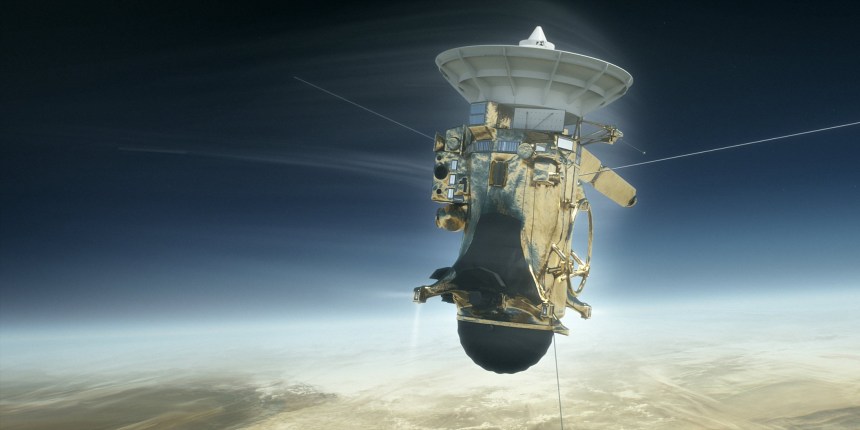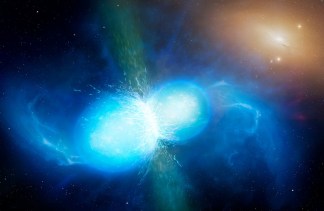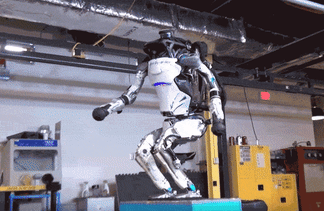 An artist’s illustration depicts Cassini as it begins to burn up in Saturn’s atmosphere.
An artist’s illustration depicts Cassini as it begins to burn up in Saturn’s atmosphere.
Keeping up with new developments in science, tech, and innovation during 2017 was a bit like trying to tread water during a tsunami.
From a dramatic solar eclipse and breathtaking advances in gene-editing technology to the detection of ripples in space-time predicted by Einstein more than a century ago, the stories just kept coming. Here’s a recap of seven we deem especially noteworthy.
TOTAL SOLAR ECLIPSE
On August 21, the moon slipped in front of the sun, blocking the light from our host star to give Americans a total solar eclipse unlike anything we’ve seen in a century. The long-anticipated event — nicknamed the Great American Eclipse — was visible along a path that stretched across the continental U.S. from Oregon to South Carolina.

A “diamond ring” effect is created during a total solar eclipse as seen from Clingmans Dome in the Great Smoky Mountains National Park in Tennessee on Aug. 21.
Missed it? Your next chance to witness a total solar eclipse will come on July 2, 2019 — but it will be visible mostly in South America. The next total solar eclipse whose path of totality crosses the U.S. will occur on April 8, 2024.
GRAVITATIONAL WAVES DETECTED
In a discovery that rocked the world of astronomy and physics, scientists announced in October that they had detected ripples in space-time known as gravitational waves. Einstein predicted the existence of such waves — in this case produced by the collision of a pair of neutron stars some 130 million years ago — in his general theory of relativity. But this was further proof that Einstein was right.

This artist’s impression shows two tiny but very dense neutron stars at the point at which they merge and explode as a kilonova. Mark Garli / University Of Warwick
The ability to detect gravitational waves could help astronomers piece together clues about everything from the evolution of the universe to the nature of dark matter, an elusive substance that is thought to make up 70 percent of the cosmos.
FAREWELL, CASSINI!
After spending 13 years orbiting Saturn, NASA’s Cassini spacecraft ended its prolific mission by plunging into the atmosphere of the ringed planet on September 15. The school-bus-sized space probe launched into space in October 1997 and arrived at Saturn in June 2004. During its lifespan, Cassini studied Saturn and its rings and moons in unprecedented detail, snapping more than 453,000 pictures in the process.
MODIFIED HUMAN EMBRYOS
In July, researchers at the Oregon Health & Science University in Portland announced that they had created viable genetically modified human embryos. The unprecedented feat was made possible with the help of a revolutionary gene-editing tool known as CRISPR-Cas9.
None of the modified embryos was allowed to develop into a baby. But the study ignited a fierce ethical debate about whether CRISPR should be used to correct disease-causing mutations.
SOMERSAULTING ROBOT
The year saw all sorts of cool new robots, from Peeqo, a bot that communicates using GIFs, to the adorable companion robot Kuri. But the most impressive bot of 2017 was an improved version of Atlas, a humanoid robot first developed by Boston Dynamics in 2013. In November, the company released a dramatic video showing Atlas performing a series of increasingly difficult box jumps, ending with an impressive finale: a perfectly executed backflip.

Atlas keeps its balance when jostled or pushed and can get up if it tips over.Boston Dynamics
But don’t worry: Atlas isn’t designed to compete against humans in the gym, but to carry out search and rescue missions and perform tasks deemed too dangerous for humans.
GREAT PYRAMID SECRET REVEALED
Scientists in Egypt announced in November that they had detected apreviously unknown “void” inside the Great Pyramid of Giza. It was the first time since the 19th century that a major interior structure was found within the 4,500-year-old pyramid, which is located along the Nile River a few miles from Cairo, Egypt.

This 3D view shows the hidden structure inside the Great Pyramid of Giza.ScanPyramids Via AFP – Getty Images
To make the discovery, the archaeologists used special detectors that “see” high-energy subatomic particles called muons. The same technology may make it possible to find hidden features in other archaeological features.
WEATHER UPS AND DOWNS
Weather-related stories were hard to ignore in 2017. In June, President Trump shocked the world when he announced that the U.S. would pull out of the Paris Agreement, a multinational treaty to combat climate change. And then there was the devastating hurricane season, which produced a pair of major hurricanes that devastated Puerto Rico and other Caribbean Islands as well as the parts of the mainland U.S.
But the year also saw the rise of several “green” solutions to weather-related problems, including the creation of “living shorelines” and rain gardens to save coastal communities from flooding and rising seas. And researchers developed a technology to scrub carbon dioxide from the air and put it back into the ground — think of it as a carbon “vacuum cleaner” — and explored somewacky but promising ideas for how to control the weather.
Via:NBCNEWS
Tags: Technology